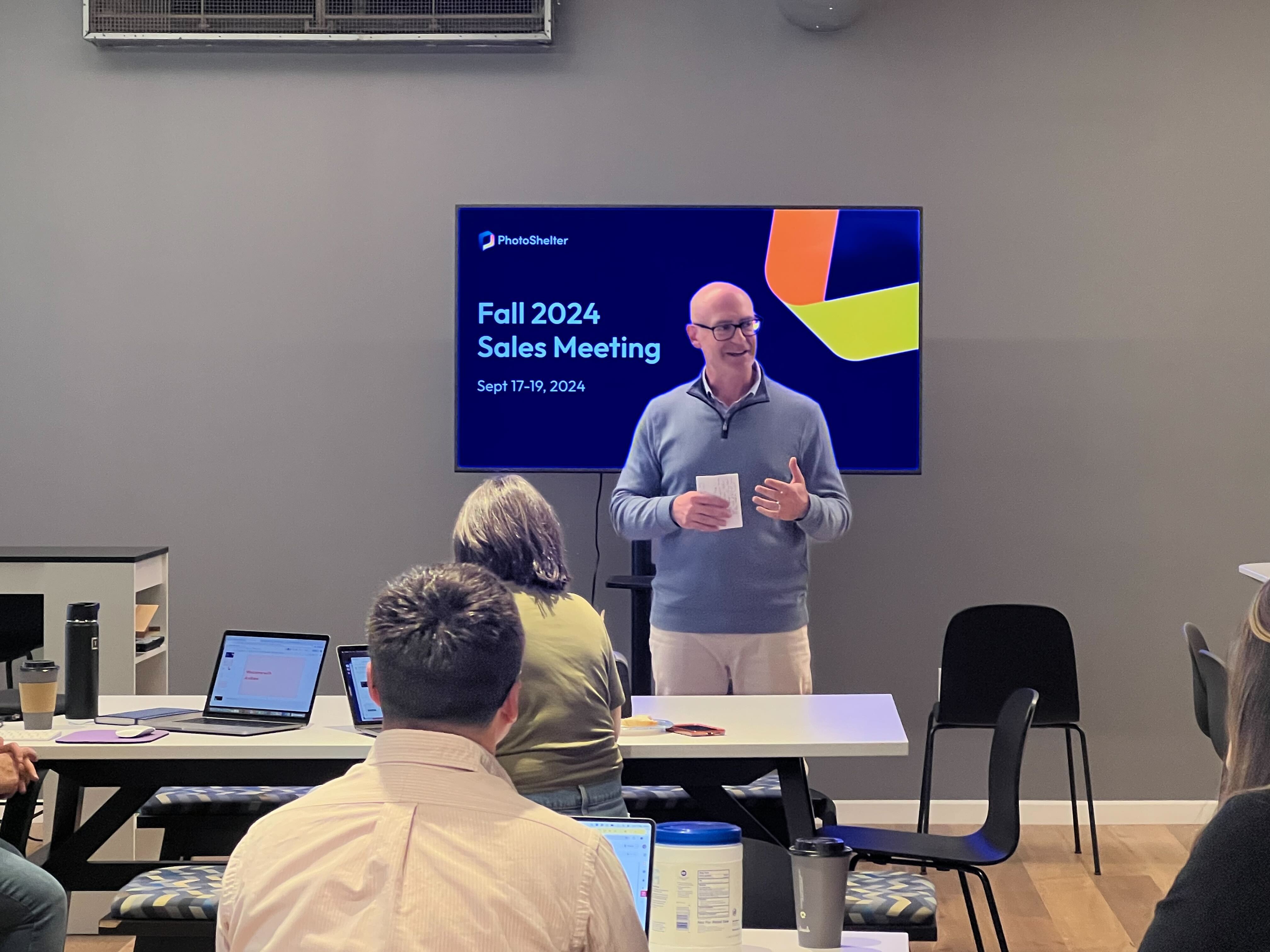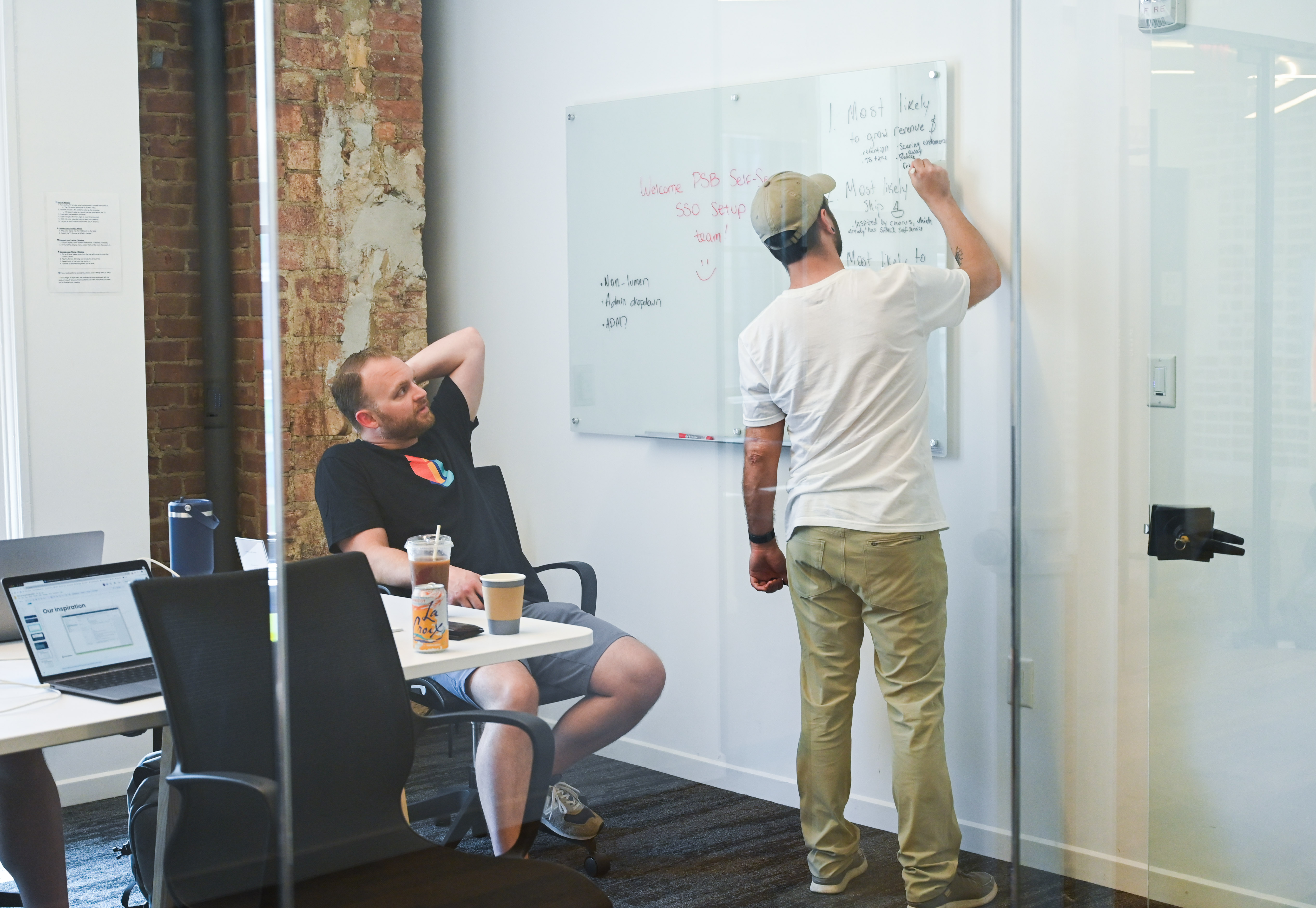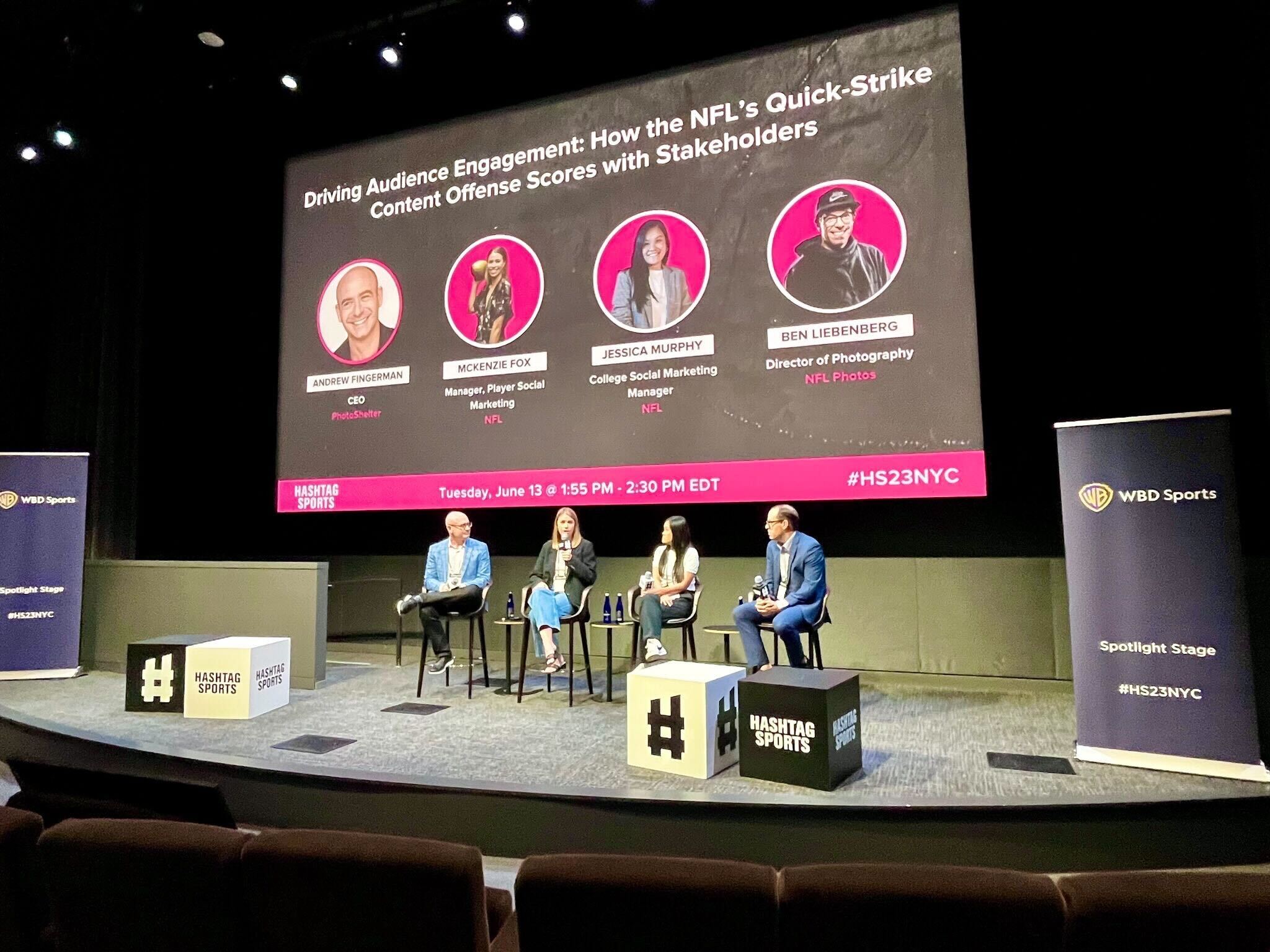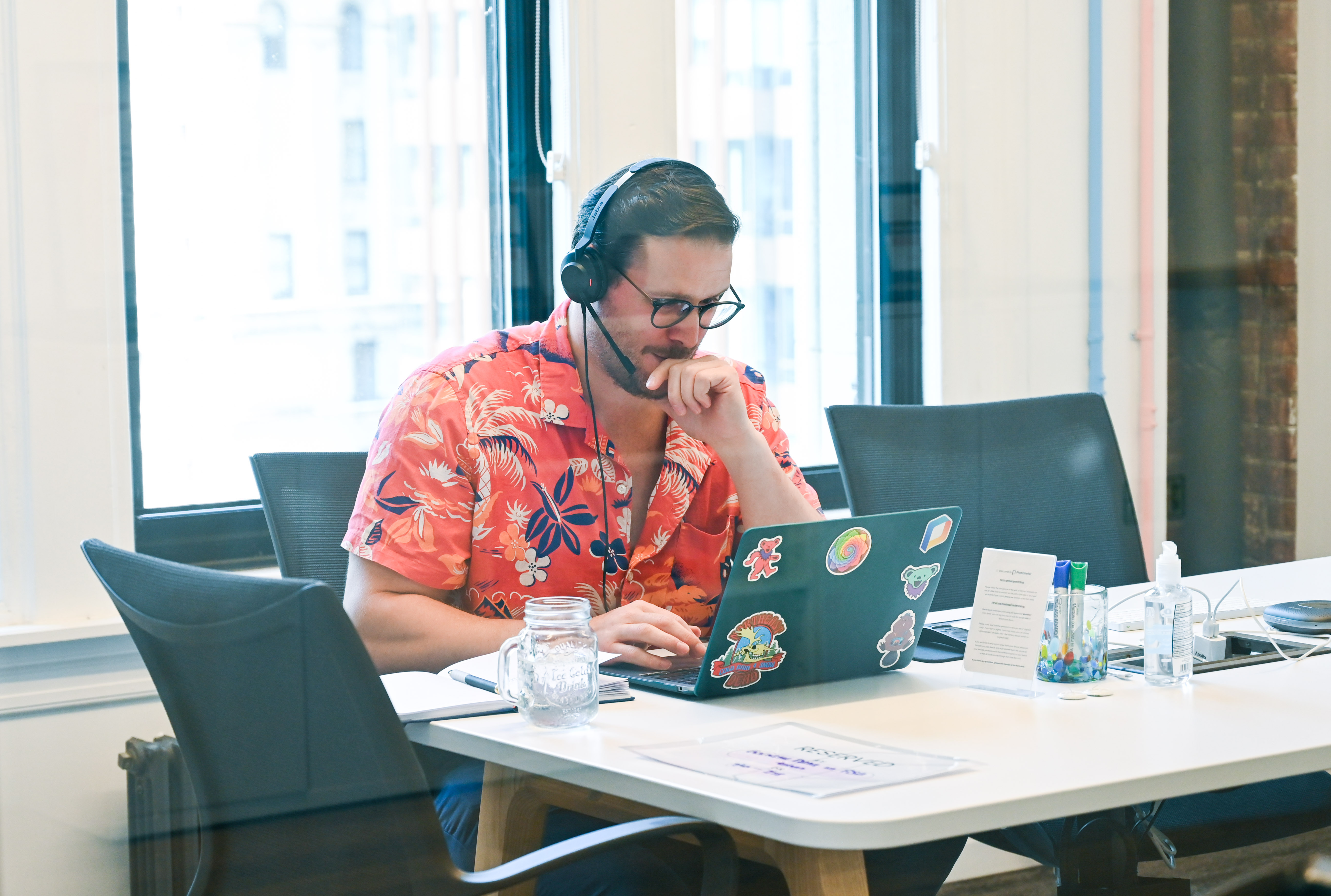“Every few weeks there’s something new” - PhotoShelter’s CEO on keeping up in a demanding tech world
CEO Andrew Fingerman talks exclusively to Creative Bloq about AI, digital asset management and the importance of keeping it simple.

PhotoShelter is well known among creatives as a capable photography website builder and online storage and showcase solution for photographers. What the company has mostly leaned into and put in a lot of development work in the last few years, though, is PhotoShelter for Brands, which offers a holistic digital asset management and distribution platform for small and big brands alike.
PhotoShelter has made its presence felt among US sports teams and brands, with clients including the New York Yankees of the MLB, and with the explosion in digital marketing demands for sports brands in the last few years, including photo and video content on a multitude of platforms, Fingerman is well aware of how customers' expectations have evolved recently.
We previously reviewed PhotoShelter in 2021, which isn't that long ago for some of us, but for Fingerman, who has overseen PhotoShelter's ongoing evolution in the face of ever-increasing demands for access to the right content at the right time, it sounds like an eon.
"We actually have some statistics from some surveys we've been doing," Fingerman explains. "With not just our customers, but more broadly, the creative and marketing community. Areas that were once what I would consider foundational DAM (digital asset management) capabilities are now more price of entry, and we're seeing traction in adding new capabilities and pushing out the standard of the accepted definition of DAM as well."
But what does that mean? Like, in English? I asked him, and he more than duly delivered on elaborating.

The market has changed content production
The world, as we know, is more technologically complex than ever. And that doesn't just apply to the IRL wild, where you find yourself ordering food from a QR code, having a phone call about your direct debits at the bank with a robot, and keeping track of 394 loyalty cards in your Google Wallet, but the digital marketing space too, with hybrid working and more publishing platforms than ever.
Fingerman has noticed this too, and has found that PhotoShelter has to meet bigger and more complex demands from marketing leaders trying to keeping up with content demand and the ease of remote collaboration due to hybrid working.
Get the Creative Bloq Newsletter
Daily design news, reviews, how-tos and more, as picked by the editors.
"It has been an outcome of the... I would consider first generation of content production, and deployment where brands themselves saw tremendous success and engagement from just creating content, acquiring content, and putting it in front of their audience," Fingerman tells me. "And they would get the likes and comments and they would feel that there was just this holistic groundswell of engagement happening." But things aren't so simple any more.
"The end result is marketing leaders, marketing contributors, creatives, they're feeling this state of overwhelm where it's becoming harder and harder to keep up with that demand for content that is necessary to not just kind of continue with the plan of feeding the beast, so to speak, but actually maintain their strategies."
And that's had a massive knock-on effect on the demands for not just the amount of content, but the management of it too. And that affects the bottom line.
"They're feeling tremendous pressure to keep up with the flow of content that is needed to differentiate themselves and communicate with their audience. And they're telling us that a majority are feeling that kind of a breakdown in those standardised workflows that would help them move more efficiently around this stuff, that it's contributing to revenue loss and preventing them from tapping into revenue.
"And that actually speaks to one of the features that we developed in the 2020-2021 timeframe that has seen significant adoption, which is our internal collaboration tool, which we call Workspaces. And so [it helps to have] the ability to have these remote teams collaborating over large volumes of content, editing in real-time, having comments and stars and approvals, and then being able to collate content down into smaller, curated sections.
"When we did this independent survey (you can find the survey results here), 65% of the respondents told us that workflow hurdles and issues are getting in the way of using content to drive actual revenue, which to me was a pretty meaningful stat.
"So they're having trouble keeping up with the flow, and they truly do feel overwhelmed by all of this. So that has been an opportunity for us to lean in, listen to the customers, and understand where are they running into gaps in either their workflow or areas where they're becoming time-consuming, relying on lots of people. And so the collaboration tool is one of the tools that we built and released just a few years ago."
So PhotoShelter's Workspaces feature has been a big part of the company's success, but it wouldn't be if it didn't also help to streamline the process from creating content, and lots of it, to storing and sorting it and then distributing it out to marketing pros, influencers and even sports stars by the time they've towelled off after a game. So another tool has been deployed; artificial intelligence.

AI is here to help content management
Andrew and I found ourselves in agreement over the moral ambiguity surrounding the explosion of generative AI, but Fingerman has no qualms about how PhotoShelter is employing AI tools, where he says the company is focused on how it can speed up content management. The prime tool for them so far is a visual search capability that's evolving at an incredible rate. And they built it themselves.
"We've established an internal centre of excellence, a team actually building our own AI capabilities in-house," Fingerman tells me. And the first point of impact was made around tagging, which I know from personal experience can be a time-consuming and mundane process. "Our customers require a great level of specificity around tagging. And so, for example, we released a people identification capability where, as a customer, you can train it to recognise influential team members or VIPs in your [content]."
And this is where PhotoShelter's sports specialism comes to the fore again.
"We have a significant kind of penetration, market dominance in sports, professional sports, as well as college athletics, but also college and the general university space as well. Those two areas have been real areas of dominance for us. So we've gone even further and enabled them to actually recognise the roster, so every player on the roster on the sports team, the sports team itself, and then brand logos that may be in the content.
"And this is not just for use with a sports team, but I like the sports example where, well, just because I was at the Yankees game yesterday... So say, if the star of the Yankees – there's a guy, Aaron Judge, who's a big home run hitter – and if we can get a picture of him and Canon cameras or who else is a sponsor, like a tyre company that happens to have a really big billboard in right field. If you can get a photo of that player with the sponsor logo in the background, package that all up in a nice gallery and send it off to your sponsors, that's helping you with your sponsor relationship and generating revenue. So we're identifying people, very specifically athletes and brands in the content."
And this AI tagging and sorting model can be customised for each customer's needs. "We've done custom models to help our customers identify just about anything that has the specificity and repeatable nature that they want to identify," he enthuses, further explaining how PhotoShelter's in-house visual search model is helping brands dealing with content overload, and read beyond images beyond just what they've been tagged with:
"One of the biggest hurdles that we've seen is that, we hear from customers is that that kind of painful process of metadata tagging, in order to make my content useful, it has to be tagged. If it's not tagged, nobody's going to be able to find it, and nobody's going to be able to deploy it when they need it for a campaign.
"And so in many cases, if a brand is sitting on a huge trove of content, whether that's developed this year or over the last five years, we want to be able to make it more useful and valuable to them, even if it hasn't been tagged at all.
"So we introduced this AI visual search capability that will make intelligent associations, on your entire base of content, and it's remarkable the strength at which you can get results. I like to use the example of an elderly couple eating a hamburger. They're in a ski lodge with a mountain in the background, and it'll find the image, whether or not it's been tagged.
"I think it's pretty remarkable where we've come with this. And so that is designed to make life easier for our customers and make it faster for them to get their hands on the content that they need to do their jobs well."

Social(ie) integration
Whether you like social media or not, there's no escaping the fact that it plays a massive role, perhaps bigger than ever, in content publishing and sharing. So for brands, marketers, influencers and stars, getting the right content out on the right social platform is of paramount importance.
PhotoShelter acquired social-media content distribution platform Socialie in 2023 and is already working hard to integrate its functions with the broader DAM capabilities of PhotoShelter. Fingerman explains why they acquired Socialie: "That company, we found fascinating. They were already working with a handful of our customers in the sports realm. And what they were doing was automating. So they built great content, so picking up where our capabilities finish, which is kind of you upload it, our AI tags it, and then there's a gallery of content."
Again, the sports link emerges: "This company, Socialie, they were recognising the player, pulling it into their system, and then it would be ready-made for either in an automated fashion to end up on the athlete's phone. Or set up in a dashboard so that whoever the customer was could actually push it out to their athletes.
"The intent here was to amplify the distribution of content to your influential stakeholders, whether or not you're an athlete or an owner of a business or a local politician. They did really well in sports. So there was a great kind of mashup of PhotoShelter and NFL's PhotoShelter and social league accounts.
"And so you can imagine in real-time, the content being captured during the Super Bowl. And then it's going up to our system. The NFL's media team is pushing it out to social media and other media partners, PR, news outlets. But then also, when the game is done, the players take a shower and put their fancy clothes on. And then they look at their phone, and they have suggested content to push out to Instagram and YouTube."
"And the final piece of that that we really, really liked was analytics. And so having added on the automation, I consider it like a last mile distribution to the stakeholders, and then really good aggregate analytics that says, how is this content performing once it leaves the platform? Then you can use the information to get better at your content efforts."

Sentiment analysis for the win
Engagement figures alone and raw numbers aren't the be-all and end-all, though, because as most of us know, social-media exposure can be good and bad. There's little benefit in distributing a crisp, perfectly captured image of an NFL quarterback to him or his social-media team for sharing, if the image shows him getting sacked by the opposing defence or him making a fumble, for example.
So there comes in PhotoShelter's AI's ability to filter and parse content by 'sentiment', that is, whether the content shows the subject in a positive or negative light. Fingerman explains: "We've begun introducing what we call sentiment analysis for us to parse out the content in a way so that it's a smaller selection of only positive content going to that player. And so that's another step. And I believe we're going to continue seeing it. These assisted workflows get better and better over time."
Of course, this tool is still in its early stages, as Fingerman admits, but the future promise is great: "Right now you can look at the content and you can look at the captions and it can make judgments there. But. It feels to me like every few weeks there's something new that's been developed that we can take advantage of or we can leverage to improve that workflow for customers that want to alleviate some of that pressure of getting content from that moment of capture to delivery and impact."
And work is already under way to make the interaction between PhotoShelter and Socalie as seamless as possible, he tells me. "We are driving forward on making that a seamless module that can be combined into PhotoShelter. That's something I'd like to do. I'd like to see it complete by the end of the year." And that speaks nicely to our final talking point, which is ease of use.
K.I.S.S. - Keep it simple, Shelter
Throughout our chat, Fingerman has come back to the importance of clarity and ease of use for all users, and he emphasises that when he talks about PhotoShelter's new user interface, titled Lumen.
"What we have heard is if you can eliminate clicks, eliminate clunkiness, then our end users will more and more rely on this tool. And then also, if you can provide robustness in the permissioning, such that we can have more precision around who is accessing the system, and getting the right content in front of the right people. So on the first challenge we just this year released a brand new, very modern user interface. We call it Lumen, and it's modern, it's fast, it's less clicks.
"We've snuck in a few other improvements, like upload, for example. You can actually do other work in the system while you have a giant batch of content uploading, instead of sitting there stuck on that same upload window. We want to deliver the smoothest, most seamless experience for the customers.
"And then the robustness of the permissioning, we've married those two. So what we will do is get very granular on enabling you to create groups within your organisation and identifying what content they have access to, and then what they can see but not download. So you can do a search, find it, and request it, or you have full access to download, and then what sizes do they have access to? Is it purely for Facebook sharing or whatever social platform, or do you have kind of full resolution for design and publishing purposes?
"And what that has done is it's enabled this feeling of not letting the, like, bigness of the DAM to become too overwhelming for an individual group that needs purpose-built software to feel supported.
So it's clear that as the tech world evolves faster and faster every year, PhotoShelter is working hard to keep up, but if the focus remains on ease of use and simplifying the journey and experience for brands, creatives and marketers, the company should have a bright future. Our review of PhotoShelter for Brands will be published tomorrow, where we share with you our own observations of using the platform.

Thank you for reading 5 articles this month* Join now for unlimited access
Enjoy your first month for just £1 / $1 / €1
*Read 5 free articles per month without a subscription

Join now for unlimited access
Try first month for just £1 / $1 / €1

Erlingur is the Tech Reviews Editor on Creative Bloq. Having worked on magazines devoted to Photoshop, films, history, and science for over 15 years, as well as working on Digital Camera World and Top Ten Reviews in more recent times, Erlingur has developed a passion for finding tech that helps people do their job, whatever it may be. He loves putting things to the test and seeing if they're all hyped up to be, to make sure people are getting what they're promised. Still can't get his wifi-only printer to connect to his computer.
